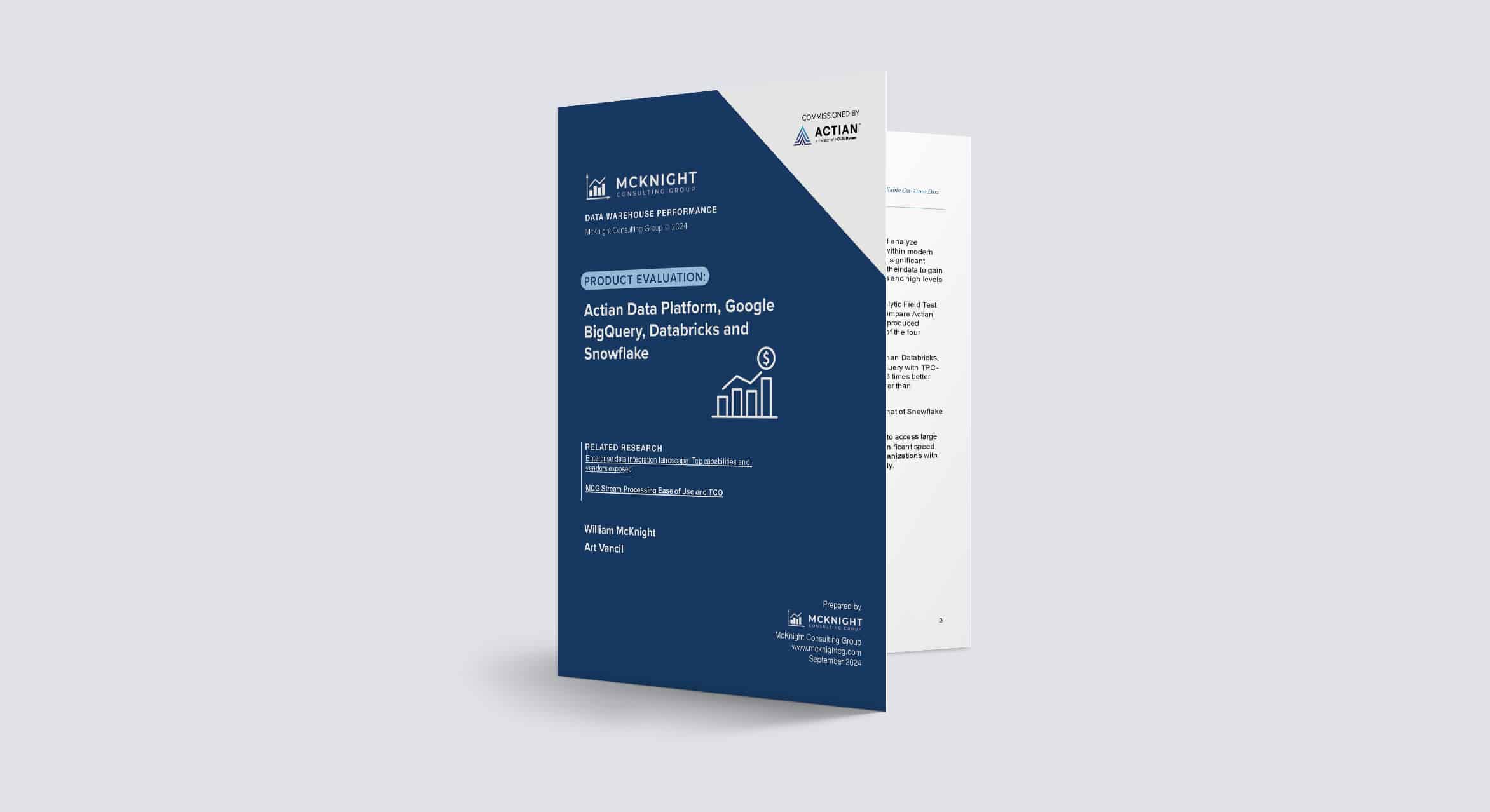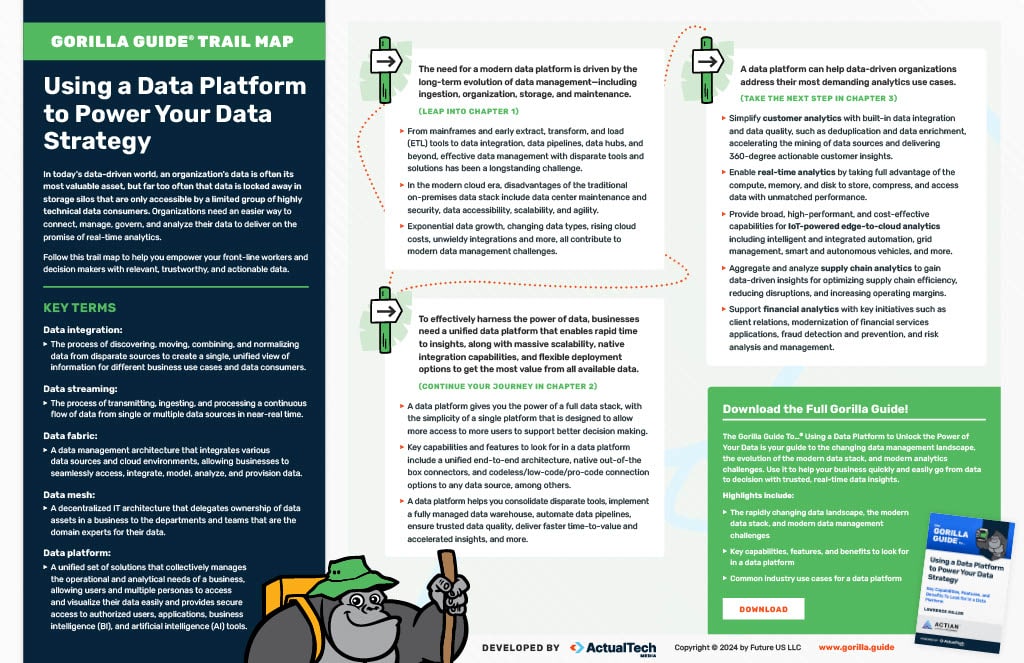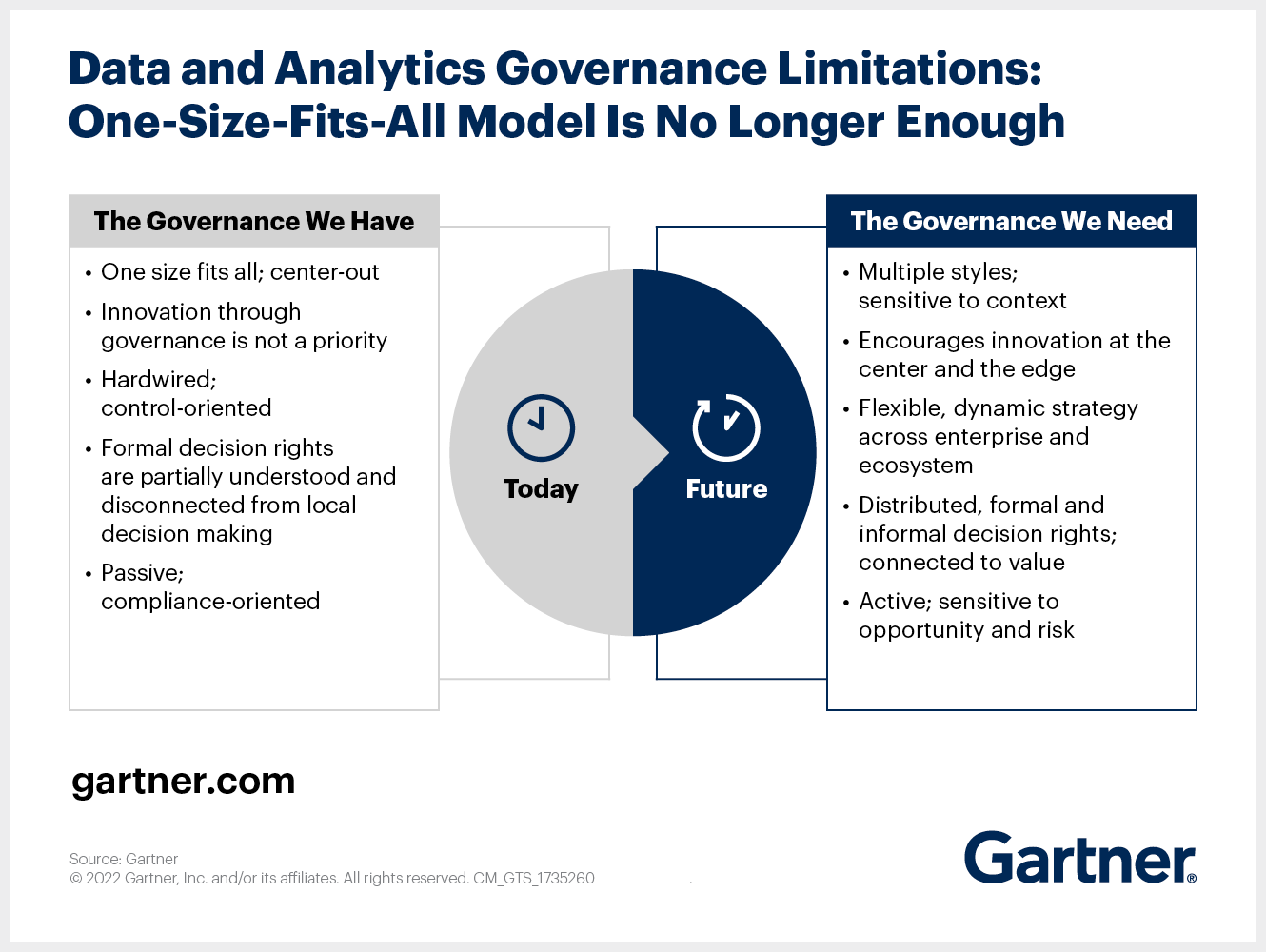Data Governance Best Practices and Implementation Strategies
Actian Corporation
September 9, 2024

Summary
This blog outlines essential practices for establishing a robust data governance framework, emphasizing the importance of clear objectives, defined roles, and continuous monitoring to ensure data quality, security, and compliance across the organization.
- Establish a Clear Governance Framework: Define objectives, roles, and responsibilities to ensure accountability and alignment with business goals.
- Implement Robust Data Quality Management: Regularly assess and cleanse data to maintain accuracy and reliability, supporting informed decision-making.
- Ensure Continuous Monitoring and Adaptability: Regularly review and update governance policies to adapt to evolving business needs and regulatory requirements.
No matter what industry you work in, you know how important it is to collect data. Retail workers rely on customer data to inform their buying decisions, healthcare workers need comprehensive and accessible data on their patients to provide treatments, and financial professionals analyze large sets of market data to make predictions for their clients. But collecting data for your organization isn’t enough — it needs to be reliable, secure, accessible, and easy for the members of your company to use. That’s where data governance comes in.
Data governance is a term for an organization’s practices and processes that help it optimize its data usage. Why is data governance important? It includes plans to protect data systems against cybersecurity threats, streamline data storage solutions, set up data democratization rules, and implement products and data platforms that support greater data efficiency throughout an organization. The specific data governance policies professionals use greatly depend on their industry, the type of data they collect, how much data they use, and other factors. However, some data governance best practices can help professionals — whether they have data roles or not — create policies that optimize and simplify their data usage.
Data Governance vs. Data Compliance
Depending on your industry, you may hear the term data compliance commonly used alongside data governance. Data compliance refers to the policies and procedures that help you meet external legal requirements surrounding your data, and data governance has more to do with optimizing and securing your data for internal use. Data compliance doesn’t include industry standards or the requirements of partner companies, just what’s legally required. Data compliance laws may influence what data governance policies you implement, but you’ll mostly work with legal teams to ensure you meet these requirements.
For example, if your organization does business in countries that belong to the European Economic Area, you must abide by the General Data Protection Regulation. This law dictates how companies collect, process, and dispose of personal data. It has a huge impact on sharing data outside of your organization, data retention timelines, and data democratization and destruction policies.
Going Beyond the Data Governance Framework
A solid data governance program requires a well-structured data governance framework that addresses data quality, collection, management, privacy and security. Organizations manage these critical components by creating company-wide policies and forming departments of data professionals who work together to support the larger data governance framework. Some of the departments that contribute to overall data stewardship include:
- Data
- Analytics
- Engineering
- IT
- Legal
- Compliance
- Executive Management
Data stewards consistently work with these departments to create and improve their policies and strategies. A governance program with high data trust never stays stagnant, so they learn about the ever-changing needs and habits of these teams to make sure data remains the fuel of a well-oiled business.
While there may be some policies that are tailored to specific departments that use data, effective data governance requires cooperation from every team in the company. If a sales team creates a lead database outside of data governance policies, which isn’t accessible to the rest of the company, that data isn’t being used effectively. If there’s a team storing metadata in unprotected spreadsheets instead of utilizing an already-established data catalog used by the rest of the organization, it weakens the governance framework.
Data Governance Best Practices
Effective data governance is mandatory. Once you assess the needs of the department stakeholders and create a framework based on them, it’s time to create your data governance program. Here are some widely-held best practices in data governance to help you begin a new program or refine one that’s fallen behind the times.
Establish Clear Roles
For any data compliance program to succeed, data stewards must make sure that the major stakeholders know their individual and collective responsibilities. This includes who’s ultimately in charge of the data, who’s responsible for maintaining data quality, who takes charge of the data management strategy, and who’s responsible for protecting it from cyber threats. This organizational chart can get a little complex at larger organizations, but ensuring there are no gaps in responsibility is one of the most critical best practices in data governance.
Develop and Enforce Data Quality Policies
Collecting as much data as possible and sorting it out after isn’t always a good strategy for data governance. Effectively utilizing data in your industry only works if the data is accurate, reliable, and relevant. If data isn’t collected often enough or doesn’t include information that your organization relies on, then it’s not meeting its true potential.
Establishing a standard for data quality begins with learning the needs of stakeholders across your organization; collecting data that no one needs is a waste of valuable resources. Then, you must create your data quality dimensions, or what defines the data you use as high-quality. The most common data quality dimensions are:
- Relevance
- Completeness
- Accuracy
- Validity
- Consistency
- Uniqueness
- Timeliness
Ensure Data Compliance & Security
High-quality data is a valuable commodity, and there’s no end to the bad actors and black hats developing new ways to steal it. IT and cybersecurity professionals are invaluable and should impact many of the data security best practices in your data governance plan. For example, they can make the most informed decision about what access control model to use for your data systems, which will affect how permissions to data are given. If they feel that data masking is appropriate for your data systems, they can walk you through the benefits of blurring vs. tokenization.
Plan Data Audits & Policy Checks
As we mentioned, a quality data governance program is constantly evolving and adapting to meet the changing needs of an organization — even when that feedback isn’t given directly to you. Performing regular data audits can provide insights into how well your data governance program bolsters data trust, whether there are any gaps in your procedures, who isn’t getting with the program, and more. If you notice that your strategy isn’t meeting the needs of your data governance framework, don’t worry — data governance policies should be streamlined and updated every so often, and it just means you’ve identified solid ways to improve data trust.
Strategy for Implementing Data Governance
Once you’ve developed your framework, spoken to stakeholders to assess their needs, developed strategic policies and processes based on data governance best practices, and received approval from the higher-ups, it’s time to put your plan into action. Here’s a step-by-step guide to help you get your data governance program off the ground.
1. Document Your Policies and Processes
Before you can expect members of your organization to follow your plan, they need to be made aware. Creating detailed documents that define your plan makes it easier to notify coworkers of the upcoming changes to their regular routines and creates a source of truth that everyone can refer to. Having these responsibilities outlined in a document ensures there’s no confusion and can keep you from having to frequently re-explain the finer points of your plan to critical stakeholders.
2. Discuss Roles & Responsibilities
You’ve likely talked to key members of your data governance plan about their role and responsibilities to make sure they’re able to perform their duties. However, explaining these things in-depth ensures that there’s no confusion or gaps in the plan. Encourage these members to ask questions so that they fully understand what’s required of them. It’s possible that they’ve agreed to what you’ve asked without fully understanding the processes or considering how their data governance role would conflict with other responsibilities.
3. Set Up Your Data Governance Tools
Your bold new data governance plan may require new tools — or reconfiguring existing solutions — to succeed. Suppose the level of data analysis your organization requires can only be achieved with a NoSQL database, or your plan hinges on integrating multiple data sources. Once you’ve received buy-in from management, you’ll want to implement and configure these tools to your specific needs before allowing wider access to them.
Performing this step early can help ensure that these solutions are working the way you’ve intended and that your coworkers aren’t using tools that are only partially working. Using tools yourself also provides an opportunity to streamline and automate any processes that you weren’t very familiar with before.
4. Train Your Employees
Maintaining a data governance plan doesn’t just require buy-in from managers and executives — it takes effort from every member of the organization. Training employees about their role in the company’s data governance goes beyond how to use things like a new data archiving solution that you’ve implemented. Everyone needs to be aware of their role and how they fit into the larger framework of data governance to ensure that there are no gaps in your strategy.
5. Promote a Data-Driven Culture
Regularly reminding members of your organization of how crucial data is — as well as following the data governance plan — helps ensure that they don’t lapse in their responsibilities and your program runs smoothly. For example, it’s said that the biggest cybersecurity threat these days is a company’s least-informed employee. Sending company-wide updates each time a new threat or scam becomes known to the larger cybersecurity community helps keep data governance top-of-mind and ensures that the components of your plan function properly.
While data governance plans should be fairly rigid for other members of your organization, you should think of yours as fluid and flexible to meet changing needs. Company growth and evolving organizational needs are good things, and one can’t over-appreciate the link between sustainable growth and data governance growing and adapting alongside it. You can use these best practices in data governance to adapt or create new plans that make your organization more efficient, productive, and secure, no matter what changes come its way.
Subscribe to the Actian Blog
Subscribe to Actian’s blog to get data insights delivered right to you.
- Stay in the know – Get the latest in data analytics pushed directly to your inbox.
- Never miss a post – You’ll receive automatic email updates to let you know when new posts are live.
- It’s all up to you – Change your delivery preferences to suit your needs.

























